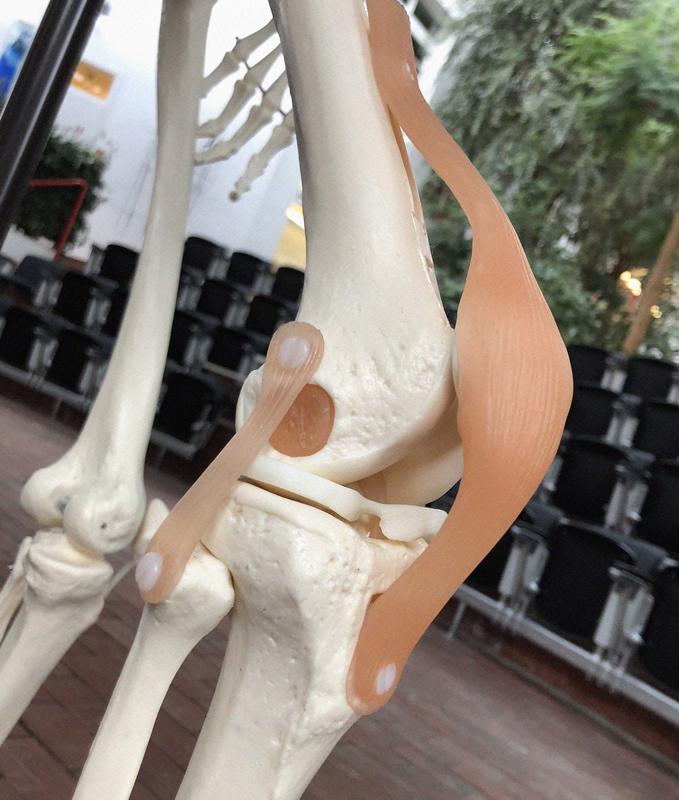5,5 millions for project on smart matrices for knee cartilage repair

Worldwide millions of people suffer from knee osteoarthritis Symbolic picture: Prof. Lutz Dürselen
A research project in cartilage regeneration, in which the Institute of Orthopaedic Research and Biomechanics at Ulm University participates together with partners from eight european countries, was recently financed by the European Commission with 5.5 million Euro.
Named RESTORE, the project aims to create 3D matrices incorporating smart nanomaterials to repair knee cartilage lesions thereby reducing or delaying the onset of osteoarthritis, which currently affects 242 million people worldwide.
These matrices, explains Meriem Lamghari, researcher at “Instituto de Investigação e Inovação” ( i3S) and the coordinator of this European consortium, “are tailored so that they can be implanted and fill the injury site as well as respond to the knee joint mechanical forces.
Moreover, they contain smart nanoparticles with regenerative, anti-inflammatory and anti-microbial properties.
The nanoparticles with regenerative properties can, whenever necessary, be remotely activated with non-invasive methods”. For that the project's team will develop a knee brace equipped with sensors capable of activating the nanoparticles present in the implanted matrix”.
The work developed by the Ulm University team, who will receive around 409 000 Euro, will concentrate on the biomechanical characterization of the matrices and on preclinical testing, explains Prof. Lutz Dürselen from the Institute of Orthopaedic Research and Biomechanics in Ulm.
RESTORE emerges following constructive discussions between orthopaedic surgeons, tissue engineers, materials researchers and cellular biologists to answer pressing clinical needs. Therefore, explains Meriem Lamghari, “we are proposing two matrices, one based on a polymer already clinically tested in the veterinary sector, namely in large animals, for large knee cartilage lesions; and another matrix generated using bioprinting technology, composed by cartilage cells of human origin to which we will also incorporate the smart nanoparticles. This matrix is more adequate for small lesions”.
The consortium, which will develop the project during the next 44 months with the participation of partners from Portugal, Spain, Italy, Iceland, Norway, Sweden and Finland, will work together with the Institute of Orthopaedic Research and Biomechanics at Ulm University (Director: Prof. Anita Ignatius)
Text with material from Meriem Lamghari, Instituto de Investigação e Inovação (i3s), Universität Porto, Portugal
Prof. Dr. Lutz Dürselen: 0731/500-55333, lutz.duerselen@uni-ulm.de
Media Contact
More Information:
http://www.uni-ulm.de/All latest news from the category: Awards Funding
Newest articles

Bringing bio-inspired robots to life
Nebraska researcher Eric Markvicka gets NSF CAREER Award to pursue manufacture of novel materials for soft robotics and stretchable electronics. Engineers are increasingly eager to develop robots that mimic the…

Bella moths use poison to attract mates
Scientists are closer to finding out how. Pyrrolizidine alkaloids are as bitter and toxic as they are hard to pronounce. They’re produced by several different types of plants and are…

AI tool creates ‘synthetic’ images of cells
…for enhanced microscopy analysis. Observing individual cells through microscopes can reveal a range of important cell biological phenomena that frequently play a role in human diseases, but the process of…





















